Can’t find your dusty old 3.5 books, got too much of that new game system on your mind? Well have no fear, everything you need to know to create your Cailore Fantasy character is right here in an easy to follow 8-step program. You can use either the old fashion pen-and-paper version of character creation or you can use a character management application, like Hero Lab. If you are using a program make sure you are set to use OGL 3.5 rules, this is not the same as Pathfinder, which uses considerably different rules for character creation. If you are making your character old-school, you’ll need a character sheet. My favorites are Mad Irishman Productions, Marcus Downing’s, and if you really want to get nostalgic, there is the official Cailore Campaign sheet we used back in the 90s. There is also the old Hero Forge Excel spreadsheet you could use if you want, it does the math for you like Hero Lab, but might not be as easy to use, but it is free.
- What’s Your Character’s Race?
- What’s Your Character’s Class?
- What are Your Character’s Ability Scores?
- What are Your Character’s Feats?
- What are Your Character’s Skills?
- What Equipment does Your Character Have?
- What is Your Character’s Story?
- Submit Your Character!
What’s Your Character’s Race?
Race will modify many of the abilities and skills your character possesses, but even more importantly, race will affect how your character fits into the game world. You can find information on races and their relationships in the campaign world by clicking here. Since we are going to be using Fantasy Grounds to playtest this adventure, we are going to use the same basic statistics for each race as they appear in the 3.5 System Rules Document (SRD), not the Cailore Fantasy versions—they are similar, but there are differences. If everything goes well, I’ll create data files with the Cailore Fantasy rules for both Fantasy Grounds and Hero Lab which will allow you to use the Cailore versions if you wish. For now however, consult the SRD.
What’s Your Character’s Class?
Just as with races, if things go well, I’ll make data files to be able to use all the Cailore Fantasy classes and prestige classes in Fantasy Grounds. But for right now, you are limited to the basic classes from the the 3.5 SRD. Those available are:
-
- Barabarian: Barbarians on Auctorus come from only a few places: there are orcish barbarians from Orkmark (you can’t play), gnoll barbarians from the Gnoll Law (you can’t play), kell barbarians from the western isle (you can play and wear a skirt) or a norden tribesman (which you can play, but it’s too cold to wear a skirt).
- Bard: All races on Auctorus have bards. Some human bards receive formal training from the Arcane College, some are self-taught.
- Cleric: Everyone needs a cleric at some point in there life. Auctorus has a great number of gods requiring veneration.
- Druid: Druids are quite unusual in Auctorus, there are kell druids from the west, a few from the far north, sylvan elves from the deep wilds, and an occasional crazy Miloi who got a little carried away on their wanderjahr.
- Fighter: Every culture makes use of brave youths with little fear of pointy things.
- Paladin: All faiths have champions, but paladins are a special breed of Lawful Good warriors who take the fight to wear evil lives. Lawful Good faiths and The Holy Order of Saints have paladins.
- Ranger: All cultures will have a few examples of rangers, but miloi, elves, kells, and nords have great numbers of them.
- Rogue: Rogues come from all races, places, and alignments.
- Sorcerer: Sorcerers are very rare outside the Sedic Concord (which is a fascist polity ruled with the iron fist of a council of psions and sorcerers). Outside the Sedic Concord, some sorcerers seek formal training in the Arcane College, while others just wing it.
- Wizard: Human, miloi, and dwarven wizards are usually members of the Arcane College, only elves have their own separate system of apprenticeship. Elves who don’t mind the smell of humans are free to join the Arcane College, however.
What are Your Character’s Ability Scores?
Now that you know what kind of character you want to make, its time to assign some good attribute scores to put some meat on those bones. For the play test we will be using a 28-point buy system. This should give everyone a strong character to start with.
Each character receives 28 points to spend on increasing his basic attributes. In this method, all attributes start at a base of 10. A character can increase an individual score by spending some of his points. Likewise, he can gain more points to spend on other scores by decreasing one or more of his ability scores. No score can be reduced below 7 or raised above 18 using this method. After all the points are spent, apply any racial modifiers the character might have.
The costs for each score are:
| Score | Points | Score | Points |
| 7 | -4 | 13 | 3 |
| 8 | -2 | 14 | 5 |
| 9 | -1 | 15 | 7 |
| 10 | 0 | 16 | 10 |
| 11 | 1 | 17 | 13 |
| 12 | 2 | 18 | 17 |
Apply Racial Bonuses
After you have bought your ability score, then modify it for your character’s race. If you don’t want those penalties to get out of control, you may wish to make sure to put a couple points into whatever ability score it is your race has trouble with, or just embrace the suck and go all in.
Determine Bonuses
Each ability, after changes made because of race, has a modifier ranging from –5 to +5. Table: Ability Modifiers and Bonus Spells shows the modifier for each score. The modifier is the number you apply to the die roll when your character tries to do something related to that ability. You also use the modifier with some numbers that are not die rolls. A positive modifier is called a bonus, and a negative modifier is called a penalty. The table also shows bonus spells, which you’ll need to know about if your character is a spellcaster.

What are Your Character’s Feats?
Humans begin with two feats, other races begin with one. Fighters get a bonus feat at first level. Choose your beginning feat(s) from the standard 3.5 SRD list.
What are Your Character’s Skills?
Determine the number of skill ranks your character, has based on their class and Intelligence modifier (and any other bonuses, such as the bonus received by humans). Then spend these ranks on skills, but remember that you cannot have more ranks than your level+3 in any one skill (for a starting character, this is four). Skills listed as “class skills” in your class description are bought one rank for one point, for skills not on your class list, the cost is double, so one skill point only gets you 1/2 a rank.
What Equipment does Your Character Have?
The characters for the play test all start with 100 gp to purchase equipment. Cailore Fantasy usually uses a different system of money, but we are going straight SRD for the playtest. You can use the 3.5 SRD equipment list for your purchases. Pay attention to the weight of your gear, I will.
What is Your Character’s Story?
Where is your character from? What do they look like? What kind of upbringing did they have? Why did they decide to become an adventurer? Write this stuff down on the character sheet so the game master can have a bit of understanding about your character, great role playing opportunities might come from it.
You can use the standard age and height/weight tables to help you flesh out the details:
Age
You can choose or randomly generate your character’s age. If you choose it, it must be at least the minimum age for the character’s race and class (see Table: Random Starting Ages). Your character’s minimum starting age is the adulthood age of his or her race plus the number of dice indicated in the entry corresponding to the character’s race and class on Table: Random Starting Ages.
Alternatively, refer to Table: Random Starting Ages and roll dice to determine how old your character is.
| Table: Random Starting Ages | ||||
| Race | Adulthood | Barbarian Rogue Sorcerer |
Bard Fighter Paladin Ranger |
Cleric Druid Monk Wizard |
| Human | 15 years | +1d4 | +1d6 | +2d6 |
| Dwarf | 40 years | +3d6 | +5d6 | +7d6 |
| Elf | 110 years | +4d6 | +6d6 | +10d6 |
| Gnome | 40 years | +4d6 | +6d6 | +9d6 |
| Half-elf | 20 years | +1d6 | +2d6 | +3d6 |
| Half-orc | 14 years | +1d4 | +1d6 | +2d6 |
| Miloi | 20 years | +2d4 | +3d6 | +4d6 |
With age, a character’s physical ability scores decrease and his or her mental ability scores increase (see Table: Aging Effects). The effects of each aging step are cumulative. However, none of a character’s ability scores can be reduced below 1 in this way.
When a character reaches venerable age, secretly roll his or her maximum age, which is the number from the Venerable column on Table: Aging Effects plus the result of the dice roll indicated in the Maximum Age column on that table and records the result, which the player does not know. A character who reaches his or her maximum age dies of old age at some time during the following year.
The maximum ages are for player characters. Most people in the world at large die from pestilence, accidents, infections, or violence before getting to venerable age.
| Table: Aging Effects | ||||
| Race | Midage1 | Old2 | Venerable3 | Max Age |
| Human | 35 years | 53 years | 70 years | +2d20 years |
| Dwarf | 125 years | 188 years | 250 years | +2d% years |
| Elf | 175 years | 263 years | 350 years | +4d% years |
| Gnome | 100 years | 150 years | 200 years | +3d% years |
| Half-elf | 62 years | 93 years | 125 years | +3d20 years |
| Half-orc | 30 years | 45 years | 60 years | +2d10 years |
| Miloi | 50 years | 75 years | 100 years | +5d20 years |
1 At middle age, –1 to STR, DEX, and CON; +1 to INT, WIS, and CHA.
2 At old age, –2 to STR, DEX, and CON; +1 to INT, WIS, and CHA.
3 At venerable age, –3 to STR, DEX, and CON; +1 to INT, WIS, and CHA.
| Table: Random Height and Weight | ||||
| Race | Base Height | Height Modifier | Base Weight | Weight Modifier |
| Human, male | 4´ 10˝ | +2d10 | 120 lb. | × (2d4) lb. |
| Human, female | 4´ 5˝ | +2d10 | 85 lb. | × (2d4) lb. |
| Dwarf, male | 3´ 9˝ | +2d4 | 130 lb. | × (2d6) lb. |
| Dwarf, female | 3´ 7˝ | +2d4 | 100 lb. | × (2d6) lb. |
| Elf, high | 5´ 6˝ | +3d4 | 90 lb. | × (1d6) lb. |
| Elf, sylvan | 4´ 4˝ | +2d8 | 65 lb. | × (1d6) lb. |
| Gnome, male | 3´ 0˝ | +2d4 | 40 lb. | × 1 lb. |
| Gnome, female | 2´ 10˝ | +2d4 | 35 lb. | × 1 lb. |
| Half-elf, male | 4´ 7˝ | +2d8 | 100 lb. | × (2d4) lb. |
| Half-elf, female | 4´ 5˝ | +2d8 | 80 lb. | × (2d4) lb. |
| Half-orc, male | 4´ 10˝ | +2d12 | 150 lb. | × (2d6) lb. |
| Half-orc, female | 4´ 5˝ | +2d12 | 110 lb. | × (2d6) lb. |
| Miloi, male | 2´ 8˝ | +2d4 | 30 lb. | × 1 lb. |
| Miloi, female | 2´ 6˝ | +2d4 | 25 lb. | × 1 lb. |
Height and Weight
The dice roll given in the Height Modifier column determines the character’s extra height beyond the base height. That same number multiplied by the dice roll or quantity given in the Weight Modifier column determines the character’s extra weight beyond the base weight.
Submit your Character
If you used Hero Lab, you can send me the .por file you used and I’ll import it. If you used an old style character sheet, you can just scan it in to me and send it as a .pdf or a graphics file, .png is usually the easiest to read for the file size. If you used Hero Forge you can either send me the whole spreadsheet or just a .pdf of the the Character Sheet pages (I & II). Leveling up during the adventure will be done in Fantasy Grounds. I will make a basic character illustration based on your description or if you have some artistic talent you want to put on display, feel free to send me your own work.
If I’ve missed anything, or if you need any help let me know. You can message me directly or use the comment form below.
I look forward to seeing your characters and make sure you are following https://www.facebook.com/cailore.fantasy/ to stay current with any news about the game.
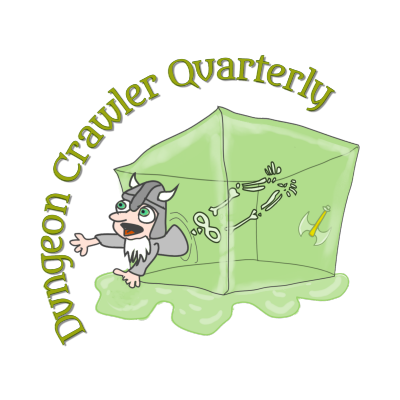



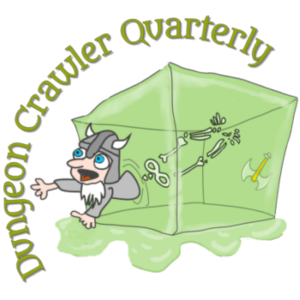



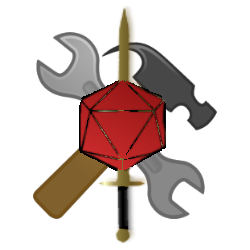
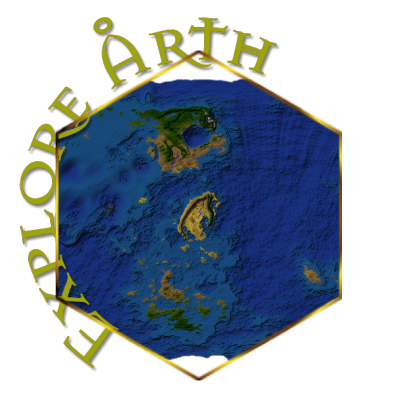
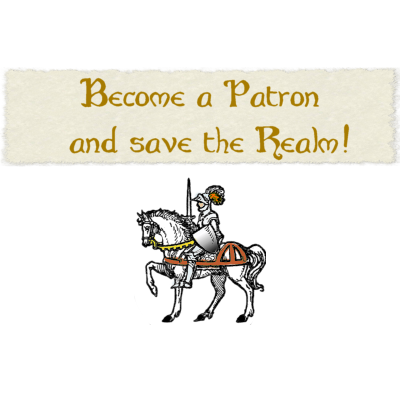



Recent Comments